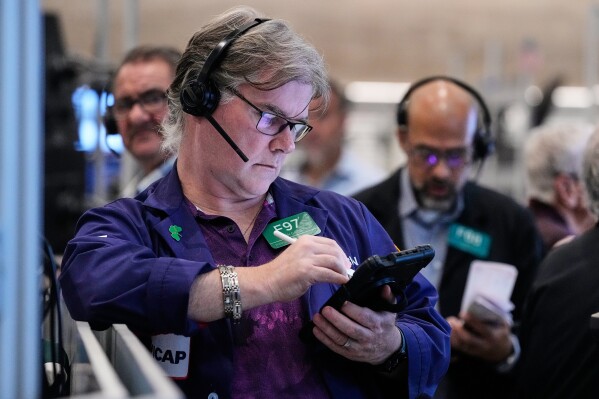
This week, gold prices plunged again, influenced by the easing of trade tensions between China and the United States. Market risk-aversion sentiment has significantly decreased, leading investors to shift to higher-risk stocks and futures markets, resulting in a sharp decline in gold demand. As funds quickly flowed into the stock and futures markets, major Asian stock prices generally rose, while the three main U.S. futures indices collectively increased in pre-market trading. Investor optimism about the economic outlook continued to grow, further intensifying the selling pressure on gold.
The current sharp drop in gold prices is due, on one hand, to the easing of China-US trade relations, which reduces market risk and promotes global economic recovery, and on the other hand, to the Federal Reserve's continued interest rate cuts, which provide ongoing support to the slowing labor market. At the same time, the easing of geopolitical tensions has also affected gold prices to some extent. Geopolitical conflicts often trigger investors' risk-averse sentiment, driving up gold prices. However, with recent ceasefires in conflict areas such as Israel and Gaza alleviating tensions, investors' demand for safe-haven assets has decreased, further contributing to the fall in gold prices. In addition, the upward trends in Asian stock markets and US futures markets have had a crowding-out effect on gold prices. Seeking higher returns, investors are also redirecting funds from safe-haven assets into higher-yielding stocks and futures markets.
As Asian stock markets and U.S. futures rise and gold prices fall, there will also be certain impacts. Investors need to readjust their asset allocation, shifting from safe-haven assets to high-risk, high-return assets such as stocks and futures to seize market rebound opportunities, but they will also face the risk of short-term market corrections. At the same time, due to the decline in gold prices, gold-related industries will face certain challenges, and some small and medium-sized mining companies may face production cuts or even suspension pressures. In addition, the decline in gold prices does not diminish the value of gold as a strategic reserve. While chasing risky assets, investors also need to be cautious of potential market corrections caused by overheated market sentiment.
In response to the impacts caused by falling gold prices, corresponding strategic adjustments should be made in a timely manner. The relevant gold industry should optimize its cost structure, enhance risk resistance, reduce costs through technological upgrades, alleviate profit contraction pressures, and actively promote the expansion of the business industrial chain to mitigate the effects of obstacles in direct gold sales. Additionally, individuals or institutions holding gold assets should adjust their investment portfolios, increase the allocation of non-gold assets such as stocks, bonds, and real estate, reduce the impact of single-asset volatility on overall returns, and pay attention to changes in macroeconomic policies and market liquidity to grasp the rhythm of asset rotation. During cycles of rising risk appetite, maintain allocations to equity assets with reasonable valuations and good growth potential to enhance portfolio flexibility. At the same time, strengthen the regulation of gold futures and spot markets, crack down on illegal activities such as price manipulation and insider trading, maintain market fairness, and improve market transparency.
In summary, the sharp decline in gold prices stands in stark contrast to the strong growth in Asian stock markets and U.S. futures, highlighting significant shifts in capital flows during a cycle of rising market risk appetite. Investors need to carefully navigate this trend by pursuing high returns from risk assets while strengthening real-time monitoring of economic data, policy signals, and geopolitical events to mitigate potential volatility risks. The gold industry should accelerate innovation and transformation, enhancing resilience through supply chain integration, while both individual and institutional investors should adhere to diversified allocations, balancing equity assets with safe-haven instruments to ensure portfolio stability and resilience during long-term growth.

YTN TV of South Korea reported on Tuesday (December 16) that the South Korean court plans to make a ruling on the charges of former President Yoon Suk Yeol for obstructing justice on January 16, 2026.
YTN TV of South Korea reported on Tuesday (December 16) tha…
On December 7, a new round of intense military conflict bro…
Recently, US media disclosed that the Pentagon is planning …
From three launch failures and a brush with bankruptcy to n…
Recently, a major piece of news has emerged in the US polit…
Against the backdrop of the Federal Reserve's third rate cu…